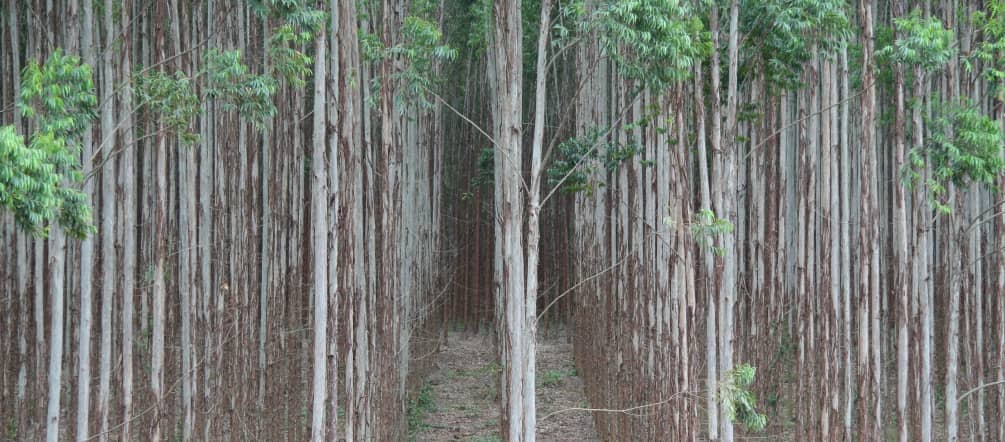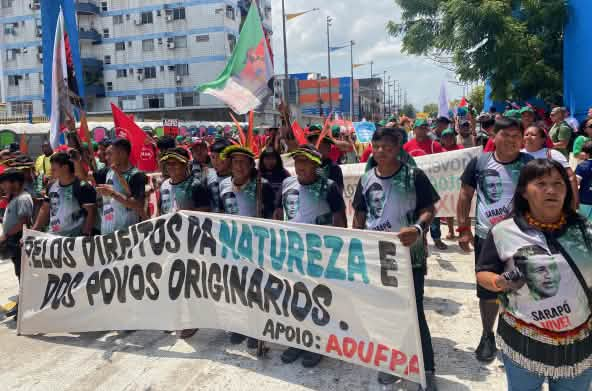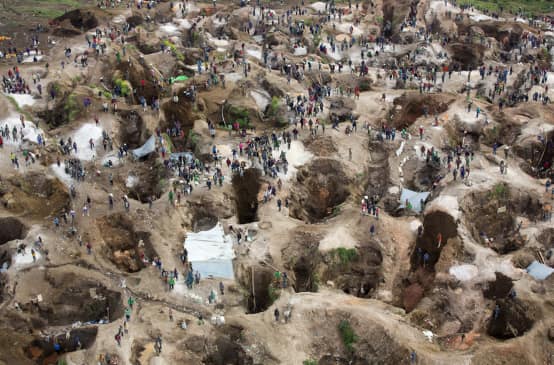
Completed campaign
Plantations are not forests
The United Nations (UN) declared the year 2011 the International Year of Forests. However, there are conflicting opinions about what constitutes a forest. According to the Food and Agriculture Organization of the United Nations (FAO), even industrial plantations with their cloned trees fall into the category of forest types. In order to build these green deserts, forests are cleared – but these areas do not count as being deforested. As a consequence, timber plantations are spreading increasingly. So please ask the FAO to revise its definition. Tree monocultures are NOT forests.
News and updatesUPDATE: The signatures have been handed over to the FAO on January 21st, 2012. Read the news here
The world’s forests are endangered, but they are still disappearing at a breathtaking pace. Annually, the Food and Agriculture Organization (FAO), a specialised agency of the United Nations that is responsible for forestry, examines the tree population and the extent of deforestation worldwide. Currently, the FAO estimates that 13 million hectares of forest are lost – every year. This means that a forest area the size of 35 football fields is cleared every minute.
According to the FAO, this dramatic development is slowed by means of afforestation. “Ambitious tree planting programmes in countries such as China, India, the United States and Viet Nam – combined with natural expansion of forests in some regions – have added more than seven million hectares of new forests annually”, the FAO explains in its current forest review.
Furthermore, the FAO defines what forests are in the eyes of the United Nations: “Land spanning more than 0.5 hectares with trees higher than 5 meters and a canopy cover of more than 10 percent, or trees able to reach these thresholds in situ.”
This definition also includes industrial tree monocultures that are consequently counted as forests by the FAO. Every year, such plantations are established on millions of hectares of land in order to appease our insatiable hunger for cheap raw materials to make paper and pulp and, more recently, for biomass to convert into electricity and heat. In many cases natural forests are cleared for this purpose. On the deforested areas, mainly cloned (i.e. genetically identical), coeval and exotic eucalyptus, pine and acacia trees are planted in orderly rows. These plantations have disastrous consequences for the environment, the climate and the people.
Further information on timber plantations
The FAO’s definition of “forest” is adopted by all UN institutions such as the UN Framework Convention on Climate Change (UNFCCC) as well as many other organisations and governments around the globe. Germany is the FAO’s third-largest contributor.
That is why the environmental and human rights organisations that support “World Rainforest Movement” (WRM) urge the FAO and the UN to change this false definition immediately. To this end, 600 scientists and experts from all over the world already approached the FAO in an open letter back in September. In November, the next round of the UN climate talks (COP 17/MOP 7) is going to take place in South Africa. Please support our campaign.
Timber plantations do not provide a habitat for plants and animals – in ecological terms, they are useless and hostile to life. The few creatures who manage to survive in spite of everything are killed by pesticides and herbicides in order to guarantee that the trees achieve their maximum growth undisturbed. In addition, the industry already tests genetically modified trees in the open field: trees that are frost-resistant or that contain less of certain ingredients such as lignin, for example.
After a few years (e.g. after about seven years in Brazil), the trees are collectively felled in a fully automatic manner by heavy machinery, the so-called harvesters. The monocultures have catastrophic effects – not only on the soil, the water balance and the global climate, but also on the people living there. The population of the forest areas is stripped of its livelihood in the same way that small farmers lose their fields and have to make way for the timber plantations of the industry and the investors. On the plantations, there are only few jobs
In most cases, plantations are financed through carbon trading. After all, it is argued, the trees growing there absorb carbon dioxide from the atmosphere. However, the arguers ignore the fact that the vegetation and the soils release enormous amounts of carbon, when natural ecosystems like forests have to give way to plantations.
For the last 25 years, the environmentalist group “World Rainforest Movement” (WRM) keeps records of the threat posed by industrial plantations on its website (in English und Spanish). There, you will also find a short animated film on this subject (in German) and you can watch both parts of the twenty-minute documentary “Voices of Latin America against the Green Desert” made by Rainforest Rescue (English subtitles). The latter shows five people from Latin America sharing their bad experiences with industrial tree monocultures.
Dear Mr. Diouf,
the FAO defines “forest” as “land spanning more than 0.5 hectares with trees higher than 5 meters and a canopy cover of more than 10 percent, or trees able to reach these thresholds in situ.”(*)
Under this definition, it has been possible to replace primary forests with monoclonal plantations of genetically engineered exotic tree species, without this being considered as deforestation. This definition has also made it possible to use the term “forest” to refer to the industrial monoculture tree plantations that are expanding at the expense of the destruction of other ecosystems.
Matters are made worse by the fact that other UN organizations and initiatives, such as the UN Framework Convention on Climate Change, as well as numerous national governments, implement this definition in negotiations, programmes and policies. In addition, this definition is used as the basis for a good number of studies and actions.
We believe that the definition currently used by FAO must be changed. It falls far short of considering the structural complexity of forest ecosystems, which are diverse, multi-stratified and functionally complex. It also fails to recognize the capacity of forests to provide ecosystem services that are crucial for humankind, such as the preservation of biodiversity or the storage of carbon, nor does it consider the fundamental role that forests play in the lives of local populations. Grouping tree plantations and diverse natural forests together under the same definition leads to the adoption of mistaken decisions. The current definition of forest has negative repercussions at the local and global level in that it legitimizes the expansion of industrial monoculture tree plantations, whose social, economic, environmental and cultural impacts have been widely documented and denounced.
Forests are also a major issue in climate negotiations. In November, the next round of the UN climate talks and the Kyoto Protocol (COP 17/MOP 7) is going to take place in South Africa.
For all these reasons, I reject the FAO’s current definition of “forest” and urge the FAO to launch a global consultation process in order to revise this definition completely. The UN and the FAO are in urgent need of a correct definition of “forest”.
Sincerely,
(*) FAO, Global Forest Ressources Assessment 2010, Main report, Annex 2. Terms and definitions used in FRA 2010. Page 209
http://www.fao.org/docrep/013/i1757e/i1757e.pdf

